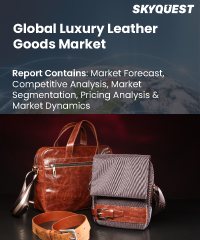
Product ID: SQMIG25K2094

Report ID:
SQMIG25K2094 |
Region:
Global |
Published Date: February, 2024
Pages:
157
|
Tables:
63 |
Figures:
75
Luxury Leather Goods Market size was valued at USD 16.12 billion in 2021 and is poised to grow from USD 18.49 billion in 2023 to USD 29.91 billion by 2030, at a CAGR of 7.11% during the forecast period (2023-2030).
The global luxury leather goods market experienced steady growth, driven by rising disposable incomes, changing consumer preferences, and a strong desire for premium and exclusive products.
Key insights include a growing demand for luxury handbags, wallets, and accessories from emerging economies, as well as a shift towards sustainable and ethically sourced materials.
Luxury brands also focused on digitalization, online retail, and personalized experiences to cater to tech-savvy consumers.
Luxury leather goods are often associated with renowned fashion and lifestyle brands that have established a strong reputation for quality, craftsmanship, and exclusivity. Consumers are willing to pay a premium for products from these brands to showcase their status and align themselves with the brand's image.
Economic growth and increasing disposable income levels in various regions have led to a larger consumer base with the means to afford luxury goods. As more individuals achieve higher levels of affluence, the demand for premium and luxury products, including leather goods, continues to rise.
US Luxury Leather Goods Market is poised to grow at a sustainable CAGR for the next forecast year.
Our industry expert will work with you to provide you with customized data in a short amount of time.
REQUEST FREE CUSTOMIZATIONWant to customize this report? This report can be personalized according to your needs. Our analysts and industry experts will work directly with you to understand your requirements and provide you with customized data in a short amount of time. We offer $1000 worth of FREE customization at the time of purchase.

Product ID: SQMIG25K2094